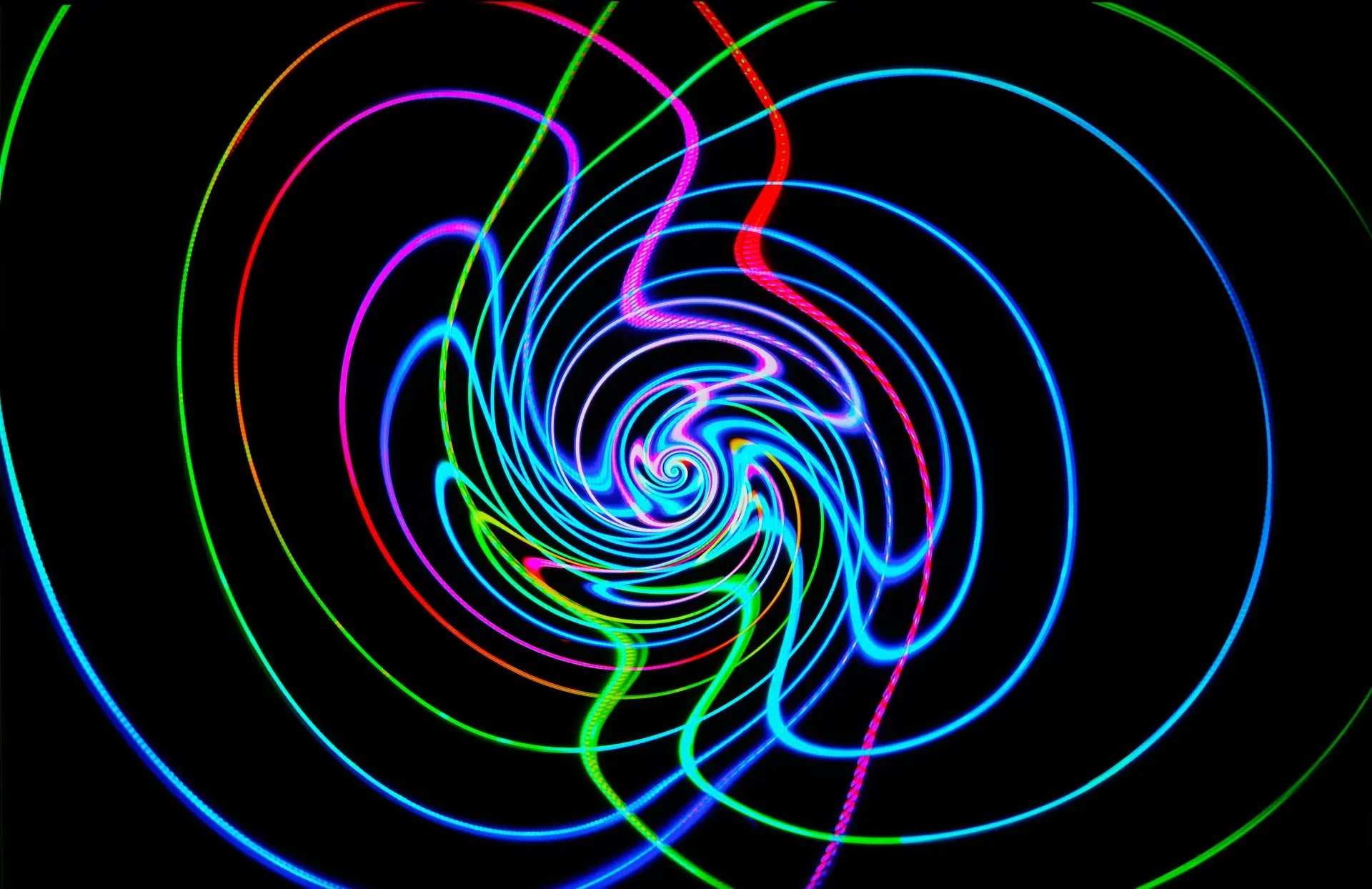Is the Veil Between Worlds Thinner at Night?

Looking for more amazing products? Check out our online store and explore our collection here! Happy shopping!
Before diving in, please note: This post is for informational purposes only. If you’d like to know more about how we approach topics, feel free to check out our friendly Disclaimer Page.
Hey there, amazing readers! 
We’re committed to delivering quality posts, and your support (even just sticking around despite the ads) means everything to us. So, bear with us, and thanks for helping us keep the good vibes rolling. Now, on to the fun stuff!
TRANSLATE BUTTON AT THE END OF THE ARTICLE
A Quick Overview
In folklore and various belief systems, the idea that the veil between worlds is thinner at night has stirred curiosity for centuries.
From ghost stories told around campfires to midnight musings under the stars, many have pondered the mysteries that darkness brings.
But what does this really mean?
In this article, we’ll dive deep into the concept of the veil between worlds, exploring its historical, cultural, and psychological aspects.
We’ll also touch on how nighttime rituals and interactions can bridge our reality with the magical unknown.
So, grab a cozy blanket and let’s explore what happens when the sun dips below the horizon.
Exploring the Mystical Concept of the Veil Between Worlds
The veil between worlds is often seen as a symbolic barrier separating our mundane existence from the mysteries of the spiritual realm.
Many believe that this veil becomes particularly thin during certain times, such as nightfall, Halloween, or specific lunar phases.
But what exactly does this mean?
Spiritual Connectivity: Some cultures view the night as a sacred time where the spirit world is more accessible.
Whether it’s the energy of the moon or the stillness of the night, many believe this is when messages from beyond can be more easily received.
Cultural Variances: Different cultures interpret this veil uniquely.
In Celtic traditions, for example, Samhain marks a time when the veil is thinnest, allowing spirits to roam freely.
This belief has influenced many modern Halloween customs.
Sensory Amplification: At night, our senses heighten.
The darkness creates an atmosphere where sounds, smells, and even feelings become more intense.
This sensory amplification can make us feel more connected to what lies beyond our physical sight.
The Unknown Factor: The uncertainty of what lurks in the shadows invites curiosity and, at times, fear.
This tension can create a bridge to other dimensions as we question what could be out there.
Personal Experiences: Many people report feeling “something” in the night—a presence or an energy that feels different from daytime.
These experiences, whether real or imagined, contribute to the lore surrounding nighttime encounters.
Introspection and Reflection: Night brings about a natural pause.
The quiet allows for introspection, where we might reflect on our lives and, by extension, our connections to the universe.
Nature’s Symphony: The sounds at night, from rustling leaves to distant animal calls, can stir our imaginations.
They conjure images of creatures that might be part of the unseen world.
Artistic Inspirations: Many artists and writers draw upon the themes of night and the veil.
From poetry to paintings, the enchantment of the night has inspired countless creative expressions throughout history.
The Search for Meaning: The night often serves as a backdrop for philosophical pondering.
Questions about life, death, and what comes after arise more fervently in the quiet hours.
Personal Connections: Individuals may feel a stronger connection to lost loved ones at night, believing it’s a time when spirits visit us or communicate in subtle ways.
The Night Sky: A Portal to the Unknown
The night sky has always fascinated humanity.
It’s vast, mysterious, and filled with stars—each a reminder of how small we are in the grand scheme.
But there’s more to it than just the aesthetic.
Stargazing as a Spiritual Practice: Many people find that gazing at the stars helps them connect with something larger than themselves.
The vastness can stir a sense of wonder and possibility.
Astrology and the Night: For those who believe in astrology, the positions of celestial bodies at night can influence human behavior and emotions.
The belief is that the night sky acts as a cosmic map of our personalities and fates.
The Moon’s Influence: Numerous cultures have attributed special powers to the moon.
Its phases often correspond with rituals believed to enhance spiritual connectivity.
Constellations and Mythology: Many constellations have stories linked to them, often involving gods, heroes, and mythical creatures.
These tales not only entertain but also connect us to historical narratives.
Nighttime Navigation: Before GPS, sailors relied on the stars to navigate.
This ancient practice highlights how the night sky has long served as a guide, both physically and spiritually.
Astronomical Events: Phenomena like meteor showers, lunar eclipses, and supermoons capture our imaginations.
These events often spark gatherings where people share stories and experiences.
Cultural Celebrations: Many festivals, like Diwali or the Mid-Autumn Festival, celebrate the night sky.
They emphasize the connection between humanity and the cosmos.
Science and Wonder: Telescopes have unveiled the wonders of the universe, leading to a blend of scientific curiosity and spiritual wonderment.
Astrophotography: This art form allows us to capture the beauty of the night sky, inviting reflection and a deeper appreciation for the mysteries above.
The Night as a Canvas: The dark canvas of night gives way to creativity.
Writers, poets, and artists often find inspiration when the world quiets down and the stars shine bright.
Historical Beliefs About Nighttime and the Supernatural
Throughout history, many cultures have associated night with the supernatural.
Let’s explore some of these intriguing beliefs.
Ancient Civilizations: Many ancient societies, from the Egyptians to the Greeks, viewed the night as a time for rituals, believing that it was easier to communicate with the gods or spirits after dark.
Folklore and Legends: Tales of ghosts and apparitions often take place at night.
These stories served as cautionary tales, warning people about the dangers of wandering after dark.
Shamanic Practices: In various indigenous cultures, shamans would conduct nighttime rituals to connect with spirits, seeking guidance and healing.
The Witching Hour: The idea of the "witching hour" arose in medieval Europe, suggesting that midnight was a time when witches and malevolent spirits were most active.
Nocturnal Deities: Many cultures have gods or goddesses associated with the night.
For example, Nyx in Greek mythology embodies the night and is often depicted as a powerful figure.
Symbolism of Darkness: In some traditions, darkness represents the unknown, the subconscious, and transformation.
This symbolism often plays a role in spiritual journeys.
Rituals of Transition: Nighttime has historically been a time for rituals marking transitions, such as coming-of-age ceremonies or rites of passage.
Cerberus and the Underworld: Mythical creatures associated with night, like Cerberus, the three-headed dog, highlight the ancient belief in guarding the threshold between life and death.
Darkness in Literature: Many classic literary works explore themes of night and supernatural elements, reflecting societal fears and fascinations.
Nighttime Superstitions: From avoiding black cats to fearing the number thirteen, nighttime has birthed a plethora of superstitions that reveal our collective anxiety about the dark.
The Science Behind Darkness and Enhanced Perception
While many mystical interpretations exist, science also sheds light on our experiences during the night.
Here’s what we know.
Biological Rhythms: Our bodies have circadian rhythms that influence sleep patterns and alertness.
At night, melatonin production increases, which can enhance our ability to perceive subtler stimuli.
Heightened Senses: In the absence of light, our other senses tend to sharpen.
We become more attuned to sounds, smells, and even shifts in temperature.
Psychological Effects: Darkness can evoke feelings of fear or anxiety, but it can also facilitate introspection and creativity.
The duality of night impacts our mental state significantly.
Evolutionary Perspective: From an evolutionary standpoint, the ability to sense danger in the dark was crucial for survival.
This innate response might still linger within us.
Neural Activity: Research shows that nighttime can lead to increased neural activity related to memory and creativity, making it a prime time for brainstorming or problem-solving.
Reduced Distractions: With fewer visual stimuli at night, our brains can focus more deeply on certain tasks or thoughts, fostering a state of flow.
Dreaming and REM Sleep: Nighttime offers a unique opportunity for dreaming, where our subconscious minds explore thoughts and feelings that we might not confront during the day.
Cultural Adaptation: Different cultures adapt their lifestyles around night.
For instance, nocturnal societies thrive in the dark and develop unique practices that enhance their awareness.
Sleep Science: Sleep studies highlight the critical role of nighttime in cognitive function, emotional regulation, and overall well-being.
Nighttime Perception: What we perceive at night can often be influenced by expectations and beliefs.
Our minds weave narratives that might amplify our experiences.
Folklore: Nighttime Creatures and Their Significance
From vampires to werewolves, nighttime creatures captivate our imaginations.
These beings often represent deeper themes within our psyche.
Vampires: Often associated with seduction and immortality, vampires symbolize our fear of death and the unknown.
Their nocturnal nature aligns with the idea of darkness concealing secrets.
Werewolves: The transformation into a werewolf speaks to the duality of human nature—the struggle between civility and primal instinct.
The full moon acts as a trigger, emphasizing lunar influences.
Banshees: In Irish folklore, banshees are believed to foretell death.
Their nighttime wails signify the thin line between life and the afterlife.
Mothman: This legendary creature, often sighted at night, embodies fear of the unknown.
Sightings typically precede disasters, adding a layer of foreboding.
Witches: Historical depictions of witches often involve nighttime rituals, portraying them as figures who communicate with spirits.
They symbolize societal fears and the unknown.
Ghosts: The belief in ghosts represents our attachment to loved ones who have passed.
Nighttime is often when these spirits are believed to linger.
Elves and Fairies: In folklore, these creatures often appear at night, embodying the magic and whimsy of the unseen world.
Their stories serve as a reminder of the enchantment around us.
Chupacabra: This mythical creature, often spotted under the cover of darkness, reflects cultural anxieties about the unknown and the fear of what lurks in the shadows.
Nightjars: These birds, often heard rather than seen, evoke mystery.
Their calls remind us that there’s much we don’t understand about the natural world.
Cultural Significance: Each creature carries a story and significance that reflects societal values and fears, inviting us to explore and question our own beliefs.
How Nighttime Rituals Connect Us to the Other Side
Engaging in nighttime rituals can foster a deeper connection to the spiritual realm.
Here’s how these practices manifest and why they matter.
Candlelight Vigils: Lighting candles at night serves as a powerful symbol of remembrance and connection.
It creates a sacred space that honors those who have passed.
Meditation Under the Stars: Many find peace in meditating outdoors at night.
The vastness of the universe invites contemplation and connection.
Astrology Rituals: Practicing astrology often involves nightly rituals, where individuals align themselves with celestial events to gain insight and clarity.
Tarot Readings: Nighttime can be an opportune time for tarot readings, as the calm ambiance enhances focus and receptivity to intuitive insights.
Moon Ceremonies: Many cultures celebrate the full moon with rituals that honor its energy.
These ceremonies can create a sense of unity with the universe.
Sound Healing: Nighttime sound baths use instruments like singing bowls to promote relaxation and spiritual connection.
The night’s stillness amplifies the experience.
Nature Walks: Walking in nature at night allows for a unique connection with the environment, fostering a sense of belonging to something larger.
Dream Journals: Keeping a dream journal encourages exploration of subconscious thoughts and feelings, often revealing insights that can guide our waking life.
Group Gatherings: Participating in group rituals at night fosters community and shared experience, amplifying energy and intention.
Personal Reflection: Simply sitting in silence at night can open the door to profound self-discovery and connection with the spiritual world.
Famous Legends of Nighttime Encounters and Spirits
Across cultures, legends of nighttime encounters with spirits abound.
These tales often serve as cautionary reminders and sources of intrigue.
The Headless Horseman: This infamous figure from Washington Irving’s "The Legend of Sleepy Hollow" embodies fear of the unknown.
His nightly gallops leave an indelible mark on those who dare to cross his path.
The Vanishing Hitchhiker: A classic urban legend, this tale involves a ghostly figure seeking a ride, only to disappear before reaching their destination, reminding us of the thin line between life and death.
The Weeping Woman (La Llorona): This haunting legend warns of a spirit searching for her lost children.
Her cries echo through the night, instilling fear and reflection on loss.
The Brown Lady of Raynham Hall: This ghostly figure, captured in one of the most famous ghost photographs, is believed to roam the halls of her former estate at night.
The Bell Witch: In Tennessee folklore, the Bell Witch is said to haunt the Bell family, delivering nighttime visits filled with strange sounds and eerie occurrences.
The Banshee: As mentioned earlier, this spirit is associated with death.
Her nighttime wails signal impending loss, emphasizing the interconnectedness of life and death.
The Chupacabra: While primarily a daytime fear, sightings of this creature often occur at night, adding an element of terror to the unknown.
The Night Stalker: Richard Ramirez, the infamous serial killer, became tied to the night as he prowled urban areas, highlighting societal fears tied to nighttime safety.
The Woman in White: Many cultures recount tales of a woman in white who appears at night, often linked to themes of loss or betrayal.
Local Legends: Every town has its ghost stories—whether it’s a haunted house or a local spirit.
These tales keep the mysteries of the night alive and invite community folklore.
Psychological Effects of Darkness on Our Minds
Darkness profoundly impacts our psychology.
It evokes various emotions and thoughts—both positive and negative.
Here’s a closer look.
Fear and Anxiety: The unknown can trigger fear.
This primal response is a survival mechanism, alerting us to potential dangers.
Creativity Boost: Many artists find inspiration in the night.
The quietude allows minds to wander freely, leading to innovative ideas.
Introspection: The stillness of night encourages self-reflection.
Without distractions, we can explore our thoughts and emotions more deeply.
Heightened Awareness: In darkness, we become acutely aware of our surroundings.
This awareness can ground us, making us more present in the moment.
Dream State: Night often leads to vivid dreams, where our subconscious reveals hidden thoughts and feelings.
Social Bonds: Sharing nighttime experiences can strengthen relationships.
Whether through storytelling or nighttime adventures, bonds form in the dark.
Ritualistic Comfort: Engaging in nighttime rituals can provide comfort and a sense of stability, helping reduce anxiety about the unknown.
Coping Mechanism: For many, the dark can serve as a safe space for processing emotions, enabling healing and growth.
Narrative Construction: The mind tends to craft stories in the dark.
Our imagination fills in the gaps, creating narratives that can be thrilling or terrifying.
Reconnecting with Nature: Dark nights can foster a deeper connection to our environment, prompting us to appreciate the beauty of the natural world.
Modern Perspectives: Do We Really Sense More at Night?
In contemporary society, the debate about heightened senses at night continues.
But what’s the scientific perspective?
Circadian Rhythms: Our biological clock dictates our sleep and wakefulness.
Research shows that our bodies naturally react differently to the night than to the day.
Enhanced Auditory Perception: Studies indicate that our ears become more attuned to sounds during the night, leading to the perception of heightened auditory sensitivity.
Increased Solitude: The quiet of night promotes mindfulness.
Fewer distractions can lead to a more profound sense of awareness.
Psychological State: Our mental state at night—often contemplative—can influence how we perceive our surroundings, sometimes making us feel more connected to the spiritual realm.
Cultural Practices: Various cultures embrace nighttime as a sacred time for rituals, possibly enhancing collective consciousness and perceptions.
Fear of the Dark: For many, the fear of the dark can amplify sensations.
This fear can trick the mind into heightened awareness of potential threats.
Nighttime Activities: Engaging in nighttime activities, such as meditation or stargazing, can lead to a more profound connection with oneself and the universe.
Influence of Light Pollution: In urban settings, artificial light can dull our senses.
However, in dark areas, the absence of light fosters sensory engagement.
Cognitive Load: At night, our brains often manage less cognitive load, allowing for greater focus on our environment and feelings.
Personal Experiences: Individual experiences shape our perceptions.
Some may feel that night brings clarity, while others may find it daunting.
Activities that Heighten Our Awareness After Sunset
Once the sun sets, various activities can help us tap into the mysteries of the night.
Here are some ideas to consider.
Stargazing: Lay back and gaze at the stars.
Identifying constellations can foster a sense of wonder and connection to the cosmos.
Moonlit Walks: Walking under the moon can be a calming experience, allowing for reflection and connection with nature.
Night Photography: Capture the beauty of night through your lens.
This art form encourages you to explore the world in a different light—literally!
Nighttime Journaling: Write down thoughts, feelings, or dreams that come to you at night.
This practice can facilitate personal growth and insight.
Meditation: Find a quiet space to meditate under the stars.
The tranquility of night enhances the meditative experience.
Attend Night Markets or Festivals: Many towns host nighttime events that celebrate local culture and community.
These gatherings can be enriching and enjoyable.
Engage in Storytelling: Gather friends or family for a night of storytelling.
Sharing tales of the supernatural or personal experiences can strengthen bonds.
Explore Nature: Take a night hike.
Experiencing nature in the dark can heighten your senses and foster a deeper appreciation for the environment.
Participate in a Nighttime Class: Many communities offer classes on topics like astrology or night photography, enhancing your knowledge and skills.
Create Nighttime Rituals: Develop your nighttime rituals, whether it’s lighting candles, practicing gratitude, or simply taking time to reflect.
Tips for Exploring the Veil Between Worlds Safely
If you’re intrigued by the idea of the veil between worlds, it’s essential to approach it safely.
Here are some tips.
Be Mindful: Stay attuned to your feelings.
If something feels off, trust your instincts and take a step back.
Create a Safe Space: Whether it’s through rituals or meditative practices, create an environment that feels secure and welcoming.
Research: Educate yourself about the practices you wish to explore.
Knowledge can empower your experiences.
Set Intentions: Before engaging in any spiritual practice, set clear intentions.
This helps focus your energy and energy around you.
Seek Community: Find groups or individuals who share your interests.
Community support can provide guidance and safety.
Document Experiences: Keep a journal of your experiences.
Writing down your thoughts can help process any encounters you may have.
Use Protection Crystals: Some believe that crystals can protect against negative energies.
Carrying amethyst, obsidian, or clear quartz may provide a sense of security.
Stay Grounded: Engage in grounding practices like deep breathing or nature walks.
These can help balance your energy.
Limit Exposure to Fear: Avoid media that may amplify fear of the unknown.
Instead, focus on positive narratives and experiences.
Trust Yourself: Ultimately, trust your intuition.
If something doesn’t feel right, it’s okay to step away from the experience.
Embracing the Night: Finding Joy in the Unknown
Nighttime can be a source of joy and wonder.
Embracing its mysteries can lead to personal growth and connection.
Here’s how to find that joy.
Adventure Awaits: See the night as an opportunity for adventure.
Whether it’s a spontaneous stargazing trip or a night hike, embrace the spirit of exploration.
Engage Your Senses: At night, immerse yourself in the sounds, smells, and sights around you.
This sensory engagement can foster a deeper appreciation for the environment.
Cultivate Curiosity: Allow your imagination to roam freely in the dark.
Ask questions and seek answers about what lies beyond our perception.
Connect with Nature: Spend time outdoors at night.
The beauty of nature after dark can be a healing experience.
Build Community: Share nighttime experiences with friends or family.
Creating memories in the dark can strengthen bonds.
Reflect and Recharge: Use the quiet of night for introspection.
Reflecting on your day can lead to deeper insights and personal growth.
Create Traditions: Establish nighttime traditions, whether it’s a monthly stargazing night or a yearly camping trip.
These rituals can bring joy and anticipation.
Explore Local Legends: Investigate local folklore and legends.
Learning about the stories rooted in your community can deepen your connection to the night.
Find Joy in Solitude: Embrace moments alone at night.
Solitude can be a powerful teacher, allowing for self-discovery.
Celebrate the Unknown: Instead of fearing the night, celebrate its mysteries.
Embrace the uncertainty as an opportunity for growth and exploration.
Conclusion
The idea that the veil between worlds is thinner at night is filled with rich history, cultural significance, and personal experiences.
Whether you view it through a mystical lens or a scientific perspective, there’s no denying that night brings its own magic.
Engaging in nighttime activities, exploring folklore, and connecting with nature can deepen our understanding of ourselves and the universe.
Each night presents us with the chance to embrace the unknown, heighten our perceptions, and perhaps even touch the veil that separates our world from the other side.
So, the next time the sun sets, don’t shy away from the darkness.
Instead, step into it with an open heart and an adventurous spirit.

The Enlightenment Journey is a remarkable collection of writings authored by a distinguished group of experts in the fields of spirituality, new age, and esoteric knowledge.
This anthology features a diverse assembly of well-experienced authors who bring their profound insights and credible perspectives to the forefront.
Each contributor possesses a wealth of knowledge and wisdom, making them authorities in their respective domains.
Together, they offer readers a transformative journey into the realms of spiritual growth, self-discovery, and esoteric enlightenment.
The Enlightenment Journey is a testament to the collective expertise of these luminaries, providing readers with a rich tapestry of ideas and information to illuminate their spiritual path.
Our Diverse Expertise
While our primary focus is on spirituality and esotericism, we are equally passionate about exploring a wide range of other topics and niches 

To ensure we provide the most accurate and valuable insights, we collaborate with trusted experts in their respective domains 
Our blog originally focused on spirituality and metaphysics, but we’ve since expanded to cover a wide range of niches. Don’t worry—we continue to publish a lot of articles on spirituality! Frequently visit our blog to explore our diverse content and stay tuned for more insightful reads.
Hey there, amazing reader! 
Check out our store here and take a peek at some of our featured products below! Thanks for being awesome!











